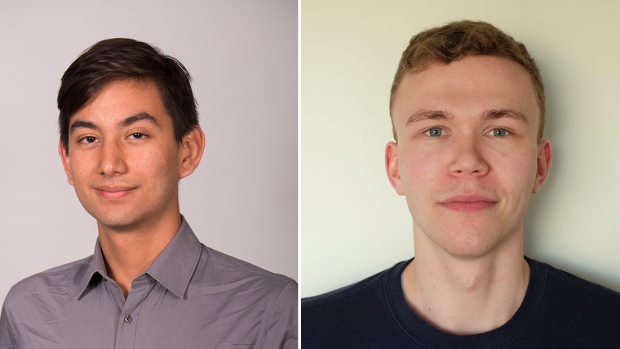Summer Undergraduate Research Students Score Big in the FICO Challenge
Boosting Explainability and Interpretability in Machine Learning Systems

Undergraduate students, Oscar Gomez and Steffen Holter
Almost anyone who has ever applied for a loan knows the importance of FICO, a data analytics company providing consumer credit scores that banks and other lenders use to assess applicants and determine rates and terms. Those decisions can sometimes seem opaque or confusing, but a team of students who participated in Tandon’s 2018 Summer Undergraduate Research program set out to remedy the situation.
They recently took part in FICO’s Explainable Machine Learning (xML) Challenge, which was organized in recognition of the fact that while advanced machine learning methods are quickly finding applications throughout the financial services industry, there is a huge gap between the ability to construct effective predictive models and the ability to understand and control these models. FICO thus called upon researchers to create a machine learning model with both high accuracy and — importantly — explainability, meaning that it could be trusted and easily understood by human stakeholders: those building and using the system, as well as average consumers who might want a deeper sense of why they are being turned down for a loan beyond boilerplate explanations that they have too many open accounts or too low an income.
Along with Associate Professor of Computer Science and Engineering Enrico Bertini, Steffen Holter and Oscar Gomez, two undergraduates who had come to Brooklyn from NYU Abu Dhabi, spent their summer working with a financial dataset provided by FICO.
“We were very lucky that the company had announced the Challenge just as we arrived for the Summer Undergraduate Research program, and as soon as Professor Bertini told us about it, we decided that’s what we would work on,” Gomez and Holter said. “It was such a supportive environment to work in. We were able to get continual feedback from him and from others at the Visualization and Data Analytics (VIDA) research center at Tandon, and everyone was willing to help and advise us. That’s a major reason why we did as well as did.”
The team ended the Challenge in second place — a towering achievement considering that the field was comprised mainly of professional groups, high-profile industry-affiliated labs, and doctoral candidates; the first-place team hailed from IBM Research.
“With the vast majority of lending decisions in the U.S. being made on the basis of FICO scores, the xML Challenge has real-world applicability and importance,” Bertini said. “The fact that undergraduate students were able to perform as they did in such a competitive, high-level event speaks not only to their rigor and skill but to the importance of initiatives like our summer research program. As Oscar and Steffen prove, given a chance to do hands-on in-depth work in a well-equipped university lab, even the youngest students can produce exceptional results.”




